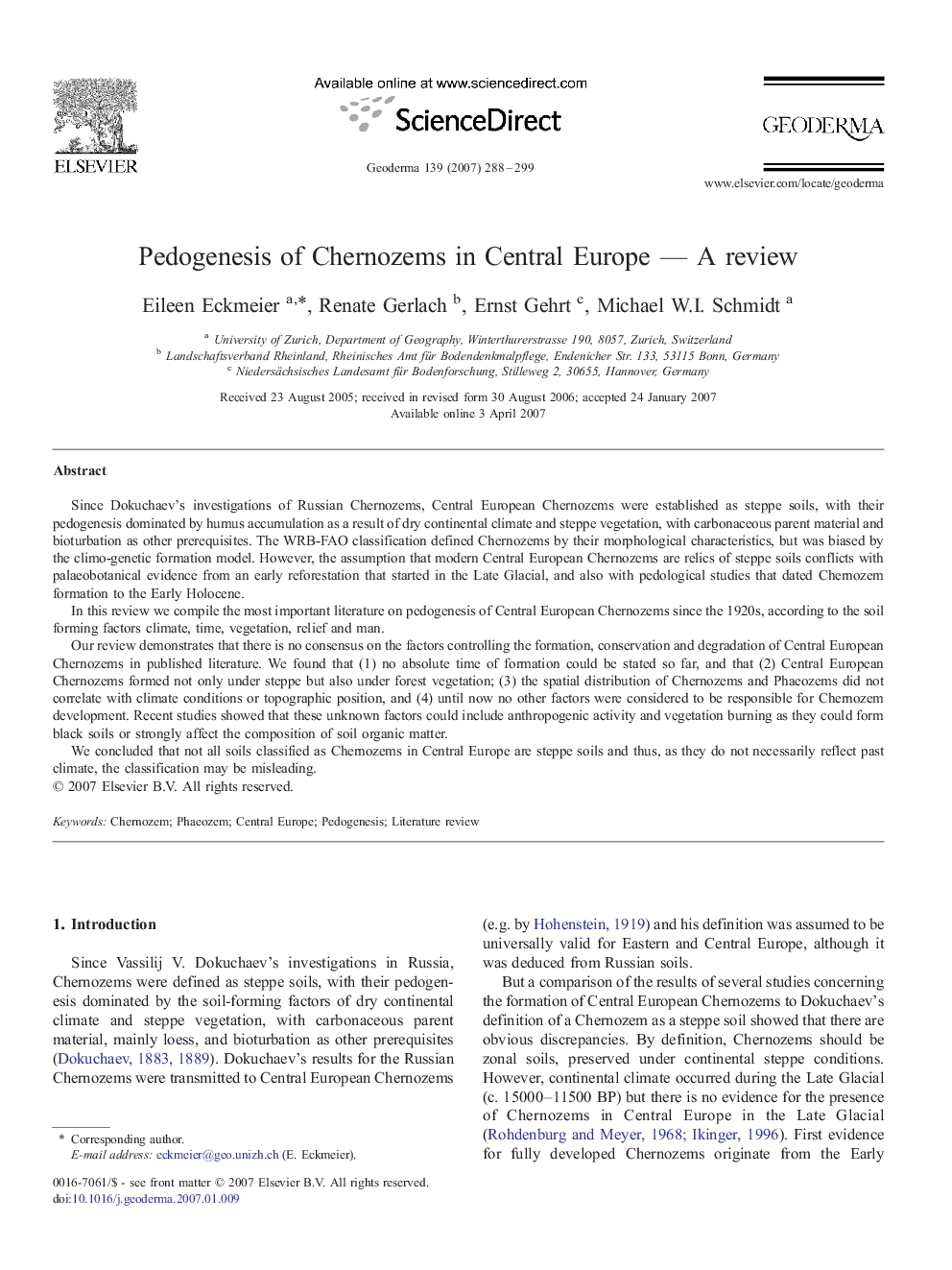| Article ID | Journal | Published Year | Pages | File Type |
|---|---|---|---|---|
| 4575349 | Geoderma | 2007 | 12 Pages |
Since Dokuchaev's investigations of Russian Chernozems, Central European Chernozems were established as steppe soils, with their pedogenesis dominated by humus accumulation as a result of dry continental climate and steppe vegetation, with carbonaceous parent material and bioturbation as other prerequisites. The WRB-FAO classification defined Chernozems by their morphological characteristics, but was biased by the climo-genetic formation model. However, the assumption that modern Central European Chernozems are relics of steppe soils conflicts with palaeobotanical evidence from an early reforestation that started in the Late Glacial, and also with pedological studies that dated Chernozem formation to the Early Holocene.In this review we compile the most important literature on pedogenesis of Central European Chernozems since the 1920s, according to the soil forming factors climate, time, vegetation, relief and man.Our review demonstrates that there is no consensus on the factors controlling the formation, conservation and degradation of Central European Chernozems in published literature. We found that (1) no absolute time of formation could be stated so far, and that (2) Central European Chernozems formed not only under steppe but also under forest vegetation; (3) the spatial distribution of Chernozems and Phaeozems did not correlate with climate conditions or topographic position, and (4) until now no other factors were considered to be responsible for Chernozem development. Recent studies showed that these unknown factors could include anthropogenic activity and vegetation burning as they could form black soils or strongly affect the composition of soil organic matter.We concluded that not all soils classified as Chernozems in Central Europe are steppe soils and thus, as they do not necessarily reflect past climate, the classification may be misleading.
